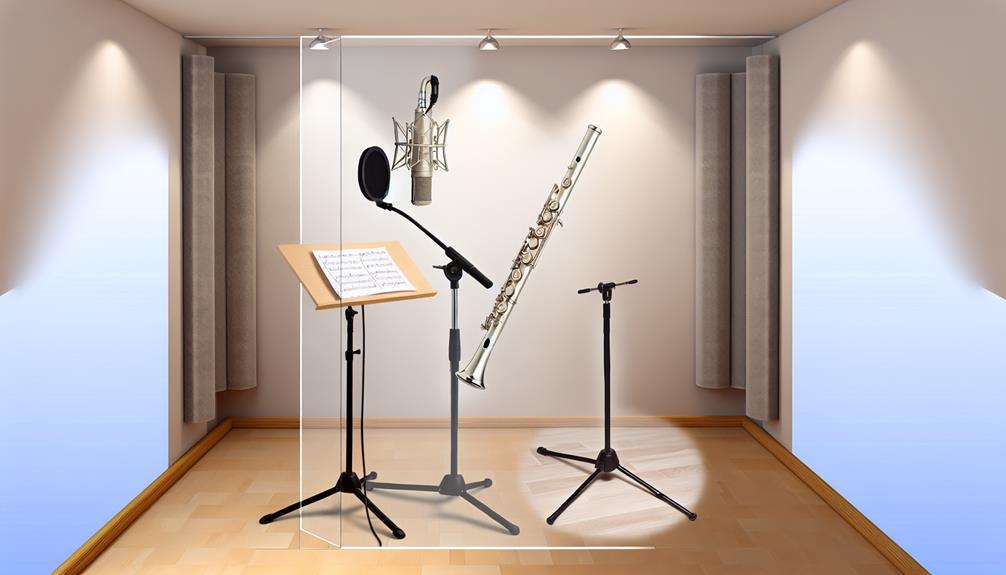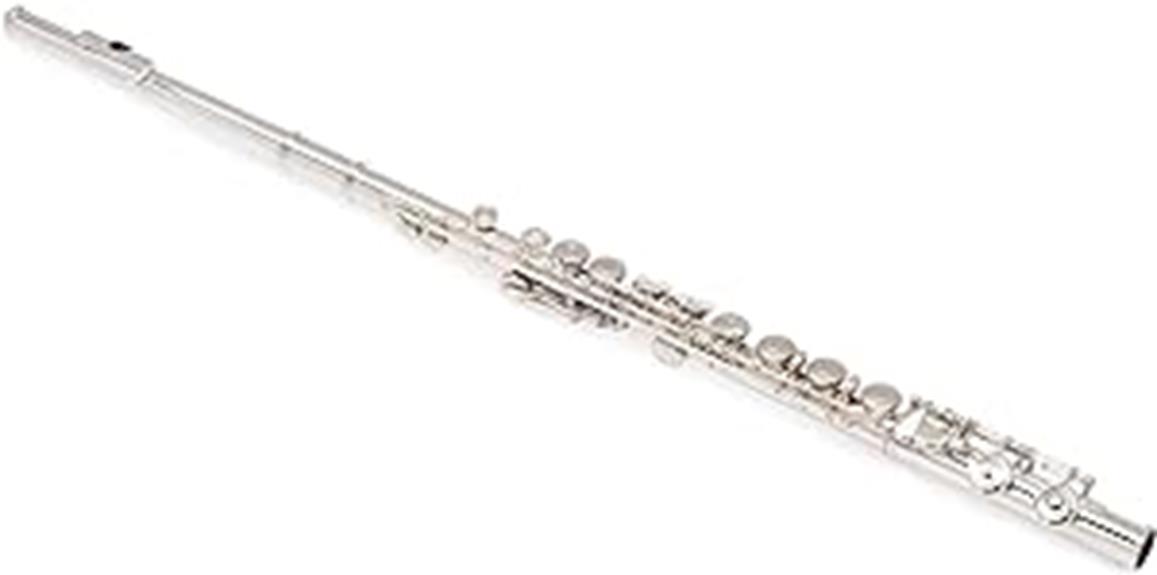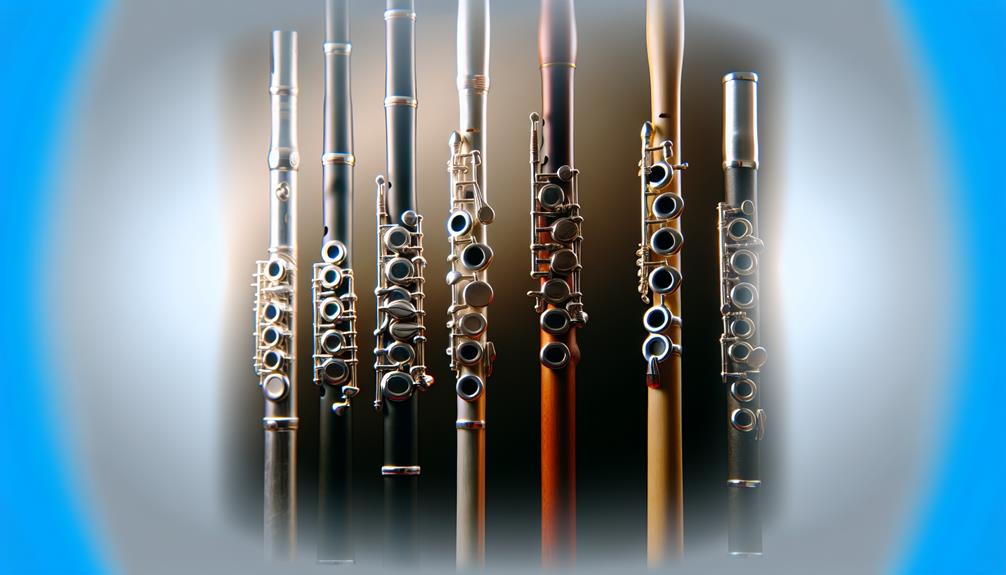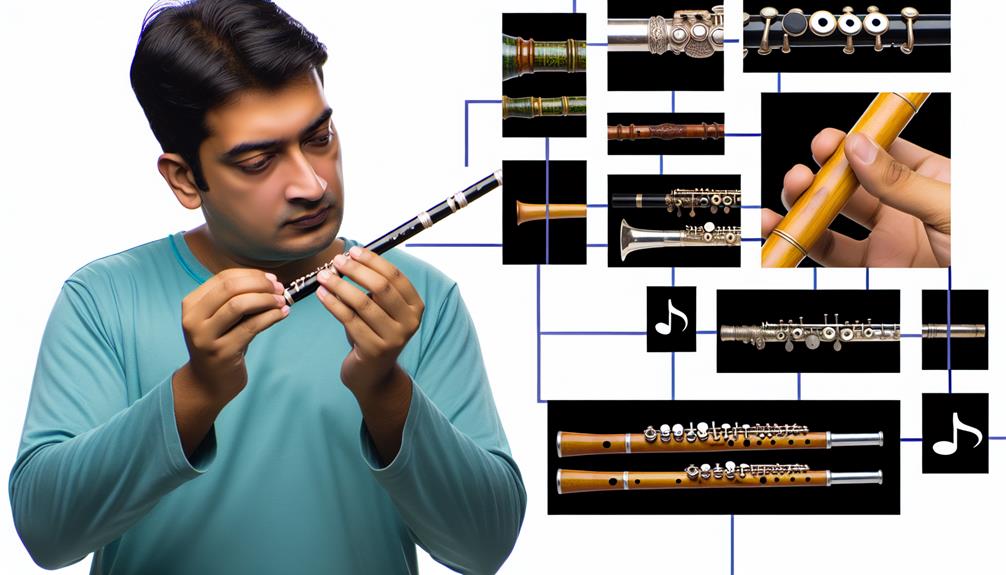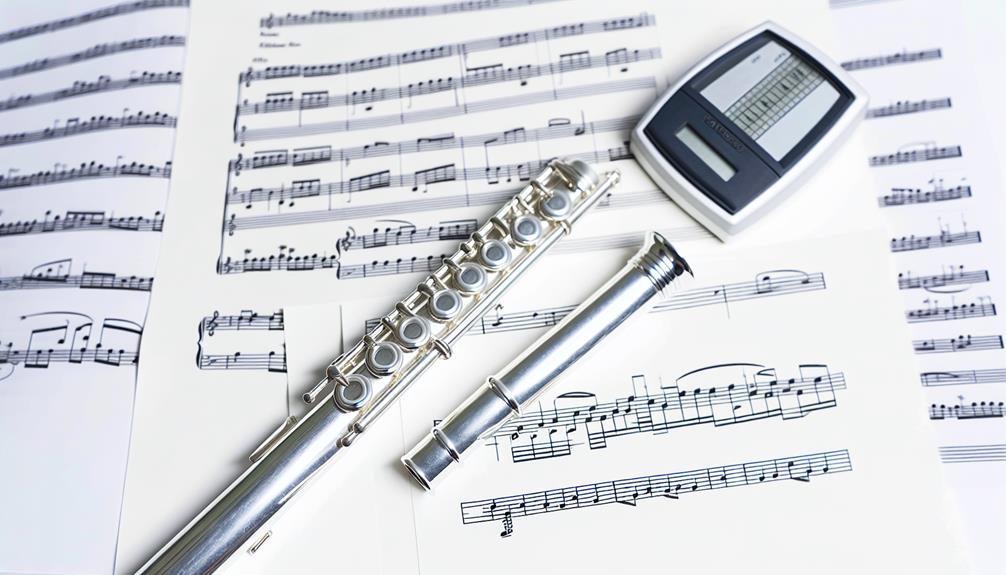The world of flutes is rich with diversity, each type offering its own unique qualities and history. When exploring the realm of these enchanting instruments, one might wonder about the three main flutes that have stood the test of time and continue to captivate musicians and listeners alike.
Understanding the significance of these particular flutes sheds light on the essence of their distinctive sounds and the roles they play in various musical genres. Let's unravel the mystery behind these three main flutes and discover what makes them truly exceptional.
Key Takeaways
- The 3 main flutes are Concert (C) Flute, Alto Flute, and Bass Flute.
- Concert Flute is bright and versatile, while Alto and Bass Flutes offer rich, mellow tones.
- Each main flute type has unique capabilities and enriches musical compositions.
- Alto and Bass Flutes contribute depth and richness to ensemble music.
History of Flutes
Throughout the centuries, the evolution of flutes can be traced back to ancient civilizations where various forms of the instrument were used for ceremonial, entertainment, and cultural purposes. The history of flutes is rich and diverse, with evidence of early flutes dating back over 43,000 years. Ancient flutes were crafted from materials such as bone, wood, and reeds, showcasing the ingenuity and creativity of early civilizations. These early flutes were integral to rituals, religious ceremonies, and cultural celebrations, symbolizing unity and harmony within communities.
As civilizations progressed, flutes evolved in design and construction, leading to the development of more sophisticated and versatile instruments. The flute's popularity spread globally, with unique variations emerging in different regions, each reflecting the cultural identity and traditions of its creators. From the haunting melodies of the Native American flute to the intricate tunes of the Chinese bamboo flute, these instruments have played a vital role in connecting people to their heritage and creating a sense of belonging within society.
Types of Main Flutes
The classification of flutes into main types is essential for understanding the diverse range of these instruments available in the musical world today. The three main types of flutes are the Concert Flute, the Alto Flute, and the Bass Flute.
The Concert Flute, also known as the C flute, is the most common type and is pitched in the key of C. It is about 26 inches long and is often used in orchestras and concert bands.
The Alto Flute is larger than the Concert Flute and is pitched in the key of G. It produces a rich and mellow sound that adds depth to ensemble music.
Lastly, the Bass Flute is the largest and lowest-pitched of the main flutes. It is pitched in the key of C, one octave below the Concert Flute. The Bass Flute has a unique and deep tone that provides a strong foundation in ensemble playing.
Understanding the distinctions between these main flute types is crucial for musicians and enthusiasts alike, as it enriches their knowledge of the diverse capabilities and characteristics of these beautiful instruments.
Unique Characteristics
With each main type of flute possessing distinct features and advantages, exploring their unique characteristics sheds light on the intricacies of these remarkable instruments. When delving into the unique attributes of the main flutes, we uncover a world of diversity and innovation that cater to various musical styles and preferences. Here are some key distinctive characteristics of the main flutes:
- Transverse Flute: Known for its bright and clear sound, this flute is held horizontally to the right of the player, allowing for intricate finger work and dynamic range.
- Vertical Flute: Characterized by its rich and mellow tone, this flute is played vertically, often used in traditional and folk music for its warm sound quality.
- Pan Flute: Comprising multiple pipes of varying lengths bound together, the pan flute produces a serene and ethereal sound, popular in world music genres.
- Piccolo: A smaller version of the transverse flute, the piccolo emits a high-pitched and piercing sound, adding brilliance and intensity to orchestral compositions.
Frequently Asked Questions
What Are Some Common Accessories or Maintenance Tips for Flutes?
When it comes to common accessories or maintenance tips for flutes, there are several key items to consider. Accessories such as a cleaning rod, cloth, and swab can help keep your flute in optimal condition.
Regularly cleaning the instrument after each use and storing it in a protective case can prevent damage and maintain its longevity.
Additionally, having a qualified technician inspect and service your flute periodically is essential for proper maintenance.
Are There Any Famous Musicians Known for Playing the Main Flutes?
Many famous musicians have showcased their talents through the captivating melodies produced by the main flutes. These skilled artists have demonstrated the versatility and beauty of this instrument, captivating audiences worldwide.
Their performances have not only elevated the status of the flute but have also inspired countless individuals to explore the enchanting world of music. Through their dedication and artistry, these musicians have left an indelible mark on the history of music.
How Can One Determine the Quality of a Flute Before Purchasing It?
When looking to determine the quality of a flute before making a purchase, it is essential to consider factors such as:
- Material
- Craftsmanship
- Brand reputation
- Sound quality
Inspecting the construction, checking for any defects, and testing the instrument's playability are all crucial steps.
Additionally, seeking guidance from experienced musicians or reputable flute dealers can provide valuable insights into selecting a high-quality flute that meets your needs and preferences.
Are There Any Cultural or Traditional Uses of Flutes in Different Parts of the World?
Flutes hold a significant place in various cultures worldwide, serving as a melodic vessel for storytelling, celebrations, and rituals.
From the haunting tones of Native American cedar flutes to the intricate melodies of traditional Japanese shakuhachi, flutes are deeply intertwined with cultural practices and traditions.
The flute's versatile nature transcends geographical boundaries, resonating with people globally.
How has this ancient instrument continued to captivate hearts and minds across diverse cultures?
Can Playing the Flute Have Any Health Benefits or Drawbacks?
Playing the flute can offer various health benefits. It can help improve respiratory function by strengthening the lungs and promoting deep breathing.
Additionally, playing the flute can enhance cognitive abilities, coordination, and concentration.
However, drawbacks may include overuse injuries like carpal tunnel syndrome or tendonitis. It's essential to practice proper technique and take breaks to prevent any potential negative effects on physical health.
Conclusion
In conclusion, the three main flutes – the transverse flute, the fipple flute, and the end-blown flute – each have unique characteristics that have evolved over centuries.
Like branches on a tree, these flutes have grown and spread their musical influence across cultures and time.
Let their melodies dance like leaves in the wind, connecting us to the ancient rhythms of the past.

